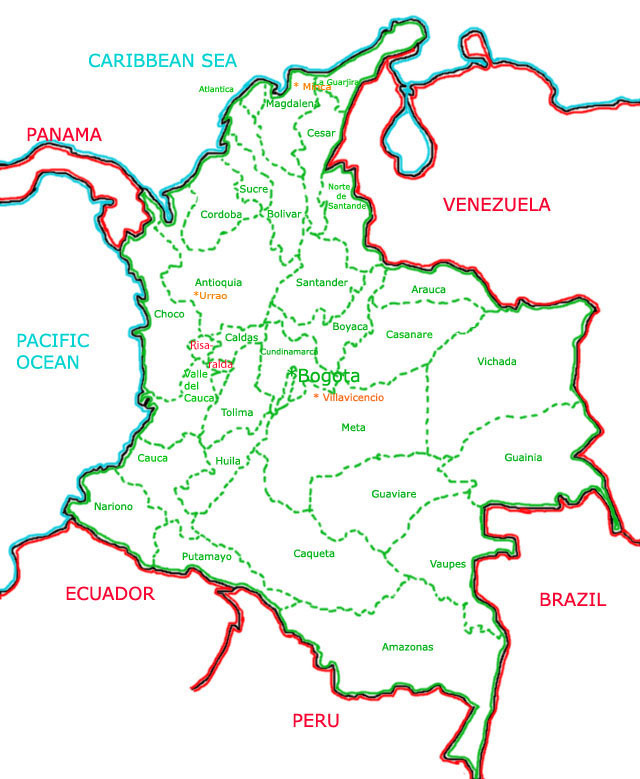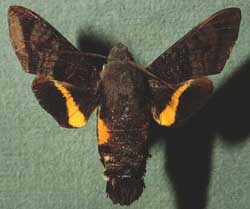
Aellopos ceculus
Cell spot usually masked by dark band. Fws: dark brown with paler marginal area and slightly paler sinuate post median
bands divided by thin darker lines.
Slightly paler am band also divided.
Hws: Broad, transverse yellow band, widening near anal angle.
Aellopos ceculus, Villavicencio, Meta, August 23, 2011, Gregory Nielsen.
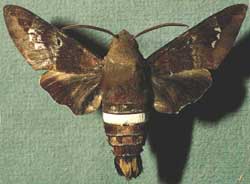
Aellopos clavipes
Body: dark brown; wide white band across abdomen.
Fw: dark brown, black cell spot, three white spots near pale brown marginal area.
Absence of white scales on hw anal angle.
|
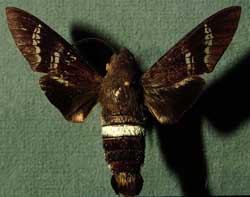
Aellopos fadus
Wide white stripe across the abdomen. Wings are dark brown. No black cell spot.
Outer band (upper half divided in two by dark line) of translucent white spots more extensive than in titan;
inner band also divided in two. Hw: pale patches along costa and inner margin reduced, compered to titan.
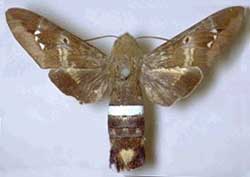
A. tantalus tantalus
Body: reddish brown; wide white band across abdomen segment 4. Fw: reddish brown with black cell spot, three white spots (upper spot largest and often divided)
near gray marginal area.
A paler, almost vestigial median band runs from cell spot to
inner margin. Hw: dark brown, indistinct pale yellow median band on upper half of wing; no white patch at anal angle.
Cell spot directly over inner most white band
|
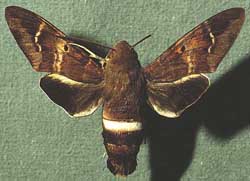
Aellopos titan titan
Wide white stripe across the abdomen. Wings are dark brown. Fw: black spot end of cell,
two bands of translucent white spots. Lower band (cell to inner margin) divided in two by dark line.
Hw: pale patches along costa and inner margin.
Cell spot internal to innermost white band

Aellopos titan titan
Wide white stripe across the abdomen. Wings are dark brown. Fw: black spot end of cell,
two bands of translucent white spots. Lower band (cell to inner margin) divided in two by dark line.
Hw: pale patches along costa and inner margin.
Villavicencio, Meta, 500m,
February 24, 2011, Gregory Nielsen
Isla Gorgona, Cauca, 0m,
May 31, 2011, Humberto Calero Mejia
|
